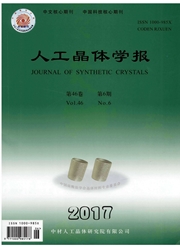

 中文摘要:
中文摘要:
本文对晶体学中关于晶体形态一些古老的基本概念(单形的正形与负形、左形与右形、一般形与特殊形)进行了深入思考,并从实际晶体形态上发育这些单形的角度,分析了它们的本质区别与内在含义:单形的正形与负形是属于同一几何单形、同一对称型(点群)的两个结晶单形,它们可以相聚;单形的左形与右形也是属于同一几何单形、同一对称型(点群)的两个结晶单形,但它们却具有不同的内部结构,所以它们不能够相聚;单形的一般形与特殊形只有结晶单形意义,无几何单形意义。这些认识阐明了过去我们多年来并没有足够重视的一些理论与实际问题,这有助于晶体形态对称理论的发展,也有助于晶体学教学思路的明确。
 英文摘要:
英文摘要:
In this paper, we discussed some classical and basic concepts of crystal morphology (positive and negative forms, right and left forms, general and special forms). We analyzed the significance of these concepts when they embody on real crystal morphologies. That is- the positive and negative forms belong to the same geometric form but two different crystallographic forms, and they can combine together on the same crystal morphology; the left and right forms belong to the same geometric form but two different crystallographic forms, and they cannot combine together on the same crystal morphology because they have different structures; the general and special forms can not only be signified by crystallographic form but also by geometric form. This realization clarified the theoretic and real implication on these old concepts, which had not attracted enough attention of us before, and is important for the development of crystal symmetry theory and teaching.
 同期刊论文项目
同期刊论文项目
 同项目期刊论文
同项目期刊论文
 期刊信息
期刊信息
